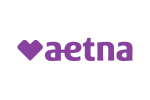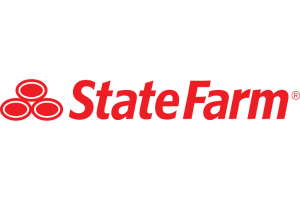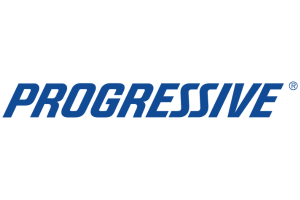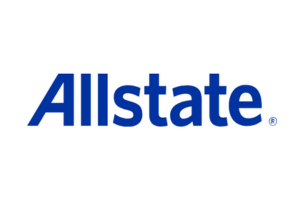Family Health Reference To American Sign Language (ASL)
Enhance Communication with the Deaf: Explore American Sign Language (ASL) Resources and Tools for Effective Interaction. Familiarize yourself with the ASL alphabet, numbers, and popular phrases for everyday conversations. Gain insights into interpreting for the deaf and potential career opportunities. Access this invaluable tool to bridge the communication gap and connect with the deaf community.
Read more Secured with SHA-256 Encryption






Find the Lowest Car Insurance Rates Today
Quote’s drivers have found rates as low as $42/month in the last few days!




Table of Contents


Licensed Insurance Agent
Justin Wright has been a licensed insurance broker for over 9 years. After graduating from Southeastern Seminary with a Masters in Philosophy, Justin started his career as a professor, teaching Philosophy and Ethics. Later, Justin obtained both his Property & Casualty license and his Life and Health license and began working for State Farm and Allstate. In 2020, Justin began working as an i...
Justin Wright


Licensed Insurance Producer
Dani Best has been a licensed insurance producer for nearly 10 years. Dani began her insurance career in a sales role with State Farm in 2014. During her time in sales, she graduated with her Bachelors in Psychology from Capella University and is currently earning her Masters in Marriage and Family Therapy. Since 2014, Dani has held and maintains licenses in Life, Disability, Property, and Casualt...
Dani Best
Updated January 2025
Welcome to our comprehensive article on the “Family Health Reference To American Sign Language.” In this guide, we explore various topics related to American Sign Language (ASL) and its importance in healthcare communication. Discover the ASL alphabet, numbers, and popular phrases for effective interactions.
We provide valuable resources such as videos and helpful links from reputable sources like the Registry of Interpreters for the Deaf and the National Science Foundation. By understanding ASL, you can enhance your ability to communicate with the deaf community and provide better care.
Linguistics of Sign
ASL was first recognized as a language by an English teacher named William Stokoe in 1965. As a language it has its own rules, just as oral languages have their own unique set of rules.
The study of sign language, including ASL is known as sign linguistics. It typically involves four basic levels, or studies.
Two of these studies are the study of meaning, or semantics, and pragmatics, which is the study of language’s use and how it affects the meaning.
Another area of study is phonology. Phonology in terms of American Sign Language includes five main parameters. These are handshapes, movement, palm orientation, location, and other markers that are non-manual markers.
Morphology is also a part of linguistic study. Morphology includes the study of morphemes, which are meaningful units of language that cannot be shortened into meaningful units that are smaller. Morphemes may be free or bound.
In addition, sign linguistics also involves the study of syntax and movement-hold.
- Language and Linguistics – Sign Language : An article on the National Science Foundation website that explains sign languages and why they matter.
- Phonological Variation in American Sign Language: Two Hands or One? : A report on the difference in ASL phonology in terms of one or two-handed signing.
- Sign Language Linguistics : A brief overview of the linguistics of ASL. It explains how ASL developed and how it differs from sign languages of other countries. The grammatical differences between ASL and English are also discussed.
Learning the Alphabet and Numbers
As with oral language, one of the first things that a person learns is their alphabet and numbers. Although it is a good way to start learning sign language, the alphabet is not used in the same way as English and other oral languages. With English the alphabet is used to spell out words. With ASL, signs are generally used to convey words, not letters. When learning the alphabet and numbers, practice is helpful, as are images or illustrations that demonstrate the signed letter or number.
- ASL letters and numbers : A page that contains two charts illustrating how to sign letters and numbers from 1-10. The top illustrates signing the alphabet and the bottom chart illustrates how to sign numbers.
- ABC’s of ASL : Photographs of the alphabet in American sign language.
- Fun Facts About American Sign Language : The second page of this PDF document discusses learning sign language. The focus on the page is learning the alphabet and numbers. Both numbers and letters are illustrated around the border of the page.
- Basic Medical Sign Language : This PDF illustrates and explains how to properly form the alphabet and numbers in ASL. The document also shows common phrases used in a medical setting.
- Signs of Life PDF : This PDF explains the importance of first responders knowing how to sign. Two pages in the PDF show how to fingerspell numbers and the alphabet.
Forming Sentences
ASL has its own rules when it comes to putting sentences together. Grammar and syntax often differ, just as they would for any other language. An English-speaking person must keep this in mind when forming sentences using sign language as she or he would not be able to properly translate it word for word. When forming sentences, facial expression is a contributing factor.
- Grammar, Gesture, and Meaning in American Sign Language : A PDF on ASL as a language and using proper grammar. Information on this page is helpful for learning how to form sentences when signing.
- Prosody and Syntax in Sign Languages : This article discusses the difference between prosody and syntax in sign language.
- American Sign Language: Grammar : This page shows the viewer how to put together sentences in sign language. The page reviews important guidelines for sentences and expresses the difference between ASL and spoken English.
- American Sign Language Syntax : This is a PDF document. It reviews the principles of sentence structure in ASL using non-manual markers and word order.
Popular Phrases
There are hundreds of phrases in ASL. When learning the language, a person may choose to first learn some of the more popular, or commonly used phrases. These may be popular phrases that are used in general conversation, or in some cases, a person may learn phrases that are helpful in his or her line of work. For example, a paramedic may choose to learn phrases that may help him or her communicate with and assess the injuries of a person in an emergency situation. In teaching babies ASL, popular phrases may be ones that will best help the child to express his or her basic needs.
- Sign Language Phrases : A page that lists numerous phrases for the reader to click on. When clicked the phrase takes the reader to a video illustrating the correct way to sign the phrase.
- Baby Sign Language: Key Phrases : A video that demonstrates popular sign language phrases to teach babies.
Interpreting for the Deaf
Interpreting for the deaf involves translating English using American Sign Language. It is also a potential career option for people who are fluent in both English and ASL. Interpreters are needed in the government, medical situations, law, education, and in businesses. Educational requirements and eligibility to work as an interpreter vary by state. In some cases, a license may be necessary or screening by the state. National certification is also available through the Registry of Interpreters for the Deaf (RID).
- Historical Development of the Definition of Transliteration : This is a article that discusses translating and its history. It also reviews information about the Registry of Interpreters for the Deaf (RID).
- NCIEC: Professional Sign Language Interpreting – What is Interpreting : This page explains in detail about the history and foundation for sign language transliteration. It provides useful examples and diagrams.
- Intermediary Interpreters (Certified Deaf Interpreters) – Definitions of Interpreters : This page explains to the reader what the difference is between an intermediary interpreter and a qualified interpreter.
- Interpreting and RID Overview : The Registry of Interpreters for the Deaf gives an overview of Interpreting as a career. This page explains the art of interpreting and also what it takes to become an interpreter.
- Discover Interpreting: Choosing a School : Readers interested in interpreting for the deaf will learn about what to look for in terms of education and choosing the right school. The page discusses choosing a Bachelor’s degree versus an Associate degree and programs.
Case Studies: Family Health Reference to American Sign Language (ASL)
Case Study 1: The Johnson Family
The Johnson family, consisting of parents Mark and Sarah and their two children, Emily and David, faced a unique challenge when they discovered that Emily, their youngest child, was born with hearing loss. Determined to ensure effective communication within the family, they embarked on a journey to learn American Sign Language (ASL) together.
Through their dedication and commitment, the Johnsons successfully integrated ASL into their daily lives, creating a harmonious environment where Emily could thrive and communicate effortlessly with her family members.
Case Study 2: The Rodriguez Family
The Rodriguez family, a bilingual household with deaf parents and hearing children, recognized the importance of bridging the communication gap between their two worlds. They sought to provide their hearing children with a strong foundation in ASL to enhance their communication skills and foster a deeper connection with their parents.
By incorporating ASL into their family dynamics, the Rodriguez family not only improved their communication but also strengthened their bond, allowing everyone to fully participate in family discussions, activities, and celebrations.
Case Study 3: The Thompson Family
The Thompson family faced a challenge when their grandparent, with limited hearing abilities, moved in. They adapted by learning ASL together, creating an inclusive environment for meaningful interactions. This initiative enriched their relationship, empowered their grandparent to express themselves freely, and promoted full engagement in family conversations.
Case Study 4: The Patel Family
The Patel family, new to the United States and originally from India, had a young child with hearing loss. They understood the significance of early intervention and language development, so they decided to incorporate American Sign Language (ASL) into their daily routines. By learning ASL alongside their child, the Patels fostered effective communication within the family and provided a strong language foundation.
This approach empowered their child to effectively communicate in both ASL and spoken English, creating opportunities for education and social interactions.
Case Study 5: The Thompson Family
The Thompson family’s experience with healthcare providers presented unique challenges due to their deaf child’s medical needs. To overcome communication barriers and ensure their child received optimal healthcare, they sought out medical professionals who were knowledgeable in ASL or had access to interpreters.
By advocating for inclusive healthcare practices, the Thompson family paved the way for their child to receive quality medical care, fostering trust and understanding between the healthcare team and the family.
Case Study 6: The Nguyen Family
The Nguyen family, composed of hearing parents and a deaf teenager, recognized the importance of maintaining open lines of communication. To support their teenager’s emotional well-being and involvement in family decisions, the Nguyens learned ASL. This allowed them to have heartfelt conversations, provide guidance, and strengthen their family bond.
Through their commitment to ASL, the Nguyen family created an inclusive environment where their teenager felt valued, understood, and fully embraced as an integral part of the family unit.
Case Study 7: The Wilson Family
The Wilson family had an elderly parent experiencing hearing loss due to aging. Understanding the importance of communication for their parent’s well-being, they decided to learn American Sign Language (ASL) together. By incorporating ASL into their interactions, the Wilson family revitalized their parent’s engagement in family conversations, activities, and social gatherings.
This effort created a renewed sense of belonging and connection, enhancing their parent’s overall quality of life.
Case Study 8: The Garcia Family
The Garcia family, consisting of hearing parents and a deaf child, recognized the need to create an inclusive educational environment for their child. They actively engaged with their child’s school and educators to implement ASL as part of the curriculum, ensuring effective communication and promoting equal participation in the classroom.
Through their advocacy efforts, the Garcia family paved the way for their child’s academic success and fostered a supportive and inclusive educational community for other deaf and hard-of-hearing students.
Case Study 9: The Adams Family
The Adams family faced the challenge of supporting their elderly parent with late-onset hearing loss. They embraced American Sign Language (ASL) as a shared language to maintain a strong family connection. By learning ASL, they improved communication and engagement, providing a sense of inclusion, understanding, and emotional support during their parent’s journey of adjusting to hearing loss.
Case Study 10: The Martinez Family
The Martinez family, which included a hearing child with a deaf sibling, recognized the importance of fostering sibling bonds and ensuring equal communication opportunities for both children. They embarked on a journey to learn ASL as a family, creating an inclusive environment where both siblings could communicate effectively and form a strong sibling connection.
By integrating ASL into their family dynamics, the Martinez family nurtured a sense of unity, cooperation, and mutual understanding among their children, laying the foundation for a lifelong supportive relationship.

Frequently Asked Questions
What is the Family Health Reference to American Sign Language?
The Family Health Reference to American Sign Language is a tool that provides medical professionals and families with a way to communicate with patients who are deaf or hard of hearing using American Sign Language (ASL).
Why is the Family Health Reference to American Sign Language important?
The Family Health Reference to American Sign Language is important because it allows medical professionals to communicate effectively with patients who are deaf or hard of hearing. This is crucial for ensuring that patients receive the best possible care and that their needs and concerns are properly understood.
Who can benefit from the Family Health Reference to American Sign Language?
Anyone who is deaf or hard of hearing can benefit from the Family Health Reference to American Sign Language. This includes individuals of all ages, from children to seniors.
How does the Family Health Reference to American Sign Language work?
The Family Health Reference to American Sign Language works by providing medical professionals and families with access to videos and other resources that demonstrate how to communicate using ASL. This allows them to better understand the needs and concerns of patients who are deaf or hard of hearing, and to provide more effective care.
Where can I find the Family Health Reference to American Sign Language?
The Family Health Reference to American Sign Language is available online through various medical and healthcare organizations, as well as through ASL resources and advocacy groups. Your healthcare provider or local deaf and hard of hearing center may also be able to provide information and resources on how to access the tool.
Get a FREE Quote in Minutes
Insurance rates change constantly — we help you stay ahead by making it easy to compare top options and save.

